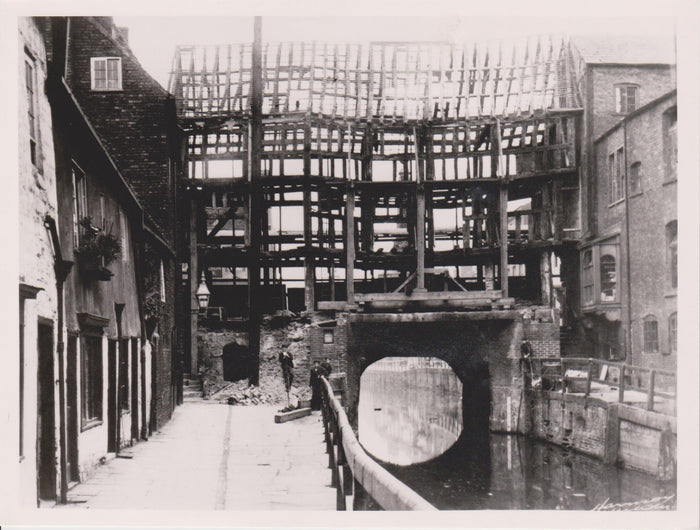
Posted on: MAY 2, 2024
Posted by: STOKES COFFEE
Tags: Behind The Scenes at Stokes
If you’re a regular on the Lincoln High Street or have visited our High Bridge Café, then you’ll know that the building is steeped in history. Originally three separate houses (nos. 207,209 and 210), built in 1540, they've since become one. These walls have witnessed everything from jewellery thefts to a perilous fire in 1819.
To celebrate the Lincoln Festival of History, we’ve filled our High Bridge Café with artefacts and stories from the building’s past. If you’d like to visit the cafe, click here for our opening times and menus.
Here’s our top 5 stories from the High Bridge’s history:
1. The Great Sweet Sale
In 1850, no. 207 was occupied by a tailor named Richard Parker. He then expanded his business to include tea, coffee, and became the local agent John Rose & Co. Richard's entrepreneurial spirit continued through his daughter, Mary. She married confectioner Henry Kirk White, and together they transformed the shop before a major refurbishment. To clear out the old stock, Henry held a week-long "Great Sale" claiming 5 tons of sweets, chocolate, and biscuits must be sold. To celebrate the shop's grand reopening, he generously donated the first day's takings to the Lincoln County Hospital Fund.

2. A Close Call at the High Bridge
Lincoln made WWII supplies but saw little bombing due to blackouts. The city wasn't unscathed though - hundreds of bombs fell, with one landing near the High Bridge, in the River Witham. Luckily, it failed to explode and was safely retrieved and carried away by barrow!

3. Living Above the Shop
Between 1969 and 1902, Henry and Mary Kirk White made a number of refurbishments to the building, adding distinctive fireplaces, two tea rooms, a ladies wating room, a private dining room plus two bedrooms and all to be furnished in an “antique style befitting an historical building, adding Indian carpets and matching linen and curtains” (later to catch fire, but that is another story).

4. Talk About a Fishy Tale
The iconic High Bridge Cafe sign disappeared in the 1980’s. Mr. Stokes sought Lakey the Blacksmith to craft and hang a new one.Shortly after, a police search for a weapon, sent frogmen into the River Witham…guess what they found - the original sign! The weapon's fate remains unknown, but the sign's dramatic return is a splash of local history.

5. A Bitter Winter
In January 1947, Britain experienced a six-week cold snap that paralysed the country and became known as the “Big Freeze”. Snowdrifts blocked roads and railways, cutting off thousands of people from essential supplies. Despite pipes frozen solid, our High Bridge Café remained open — staff carried in every drop water by bucket to keep the café functioning.

These are just a few of the stories we know about our High Bridge Café. If you’re interested in learning more about its’ heritage and how R W Stokes came to acquire it, then pop into our café this weekend! We’ve even displayed Mr Stokes’ gas-powered coffee roaster and the original Stokes uniforms.
If you’d like to learn more about the Lincoln Festival of History, click here.
If you have a memory or story of our Stokes High Bridge Café, we would love to hear about it over on Facebook or Instagram.
Want to keep reading? Here are some of our other blogs:
